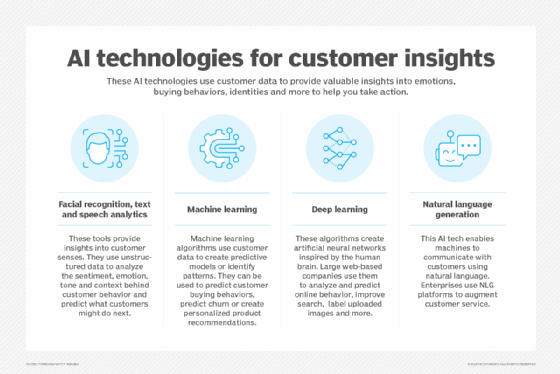
Getty Images
What are the pros and cons of a CRM platform?
CRM platforms can improve CX, but they often require significant investment. CX leaders should understand the pros and cons of these platforms before purchasing.
Every sales team needs a CRM platform to organize customer data, but challenges such as manual data entry can make the tool difficult for organizations to maintain.
CRM platforms have always tracked customer interactions during the sales cycle, but over the years, vendors have adapted the tools to do more. For instance, many platforms use AI to suggest what sales representatives should do next and which customers to prioritize. Customer service, marketing and product development teams can also use CRM platforms to access centralized customer data and make informed decisions.
Pros of CRM platforms include the following:
- Increased sales.
- Improved customer service.
- Enhanced marketing campaigns.
- More customer loyalty.
- Improved collaboration.
- Remote work access.
Despite these benefits, CRM implementations can bring challenges, including siloed data, data entry and adoption resistance. CX leaders should understand the pros and cons of CRM platforms to make sure teams use them effectively.
6 pros of CRM platforms
CRM platforms can increase sales, improve customer service and enhance marketing campaigns.
1. Increased sales
Sales reps contact anywhere from dozens to hundreds of potential customers weekly. CRM systems can help them organize and store that customer data in a central repository, including contact information, job title, past interactions with the company and purchase history. This lets reps spend more time building relationships and less time searching through emails or stacks of business cards for basic customer information.
CRM systems also offer lead scoring features to help reps identify which leads and opportunities will likely convert. These capabilities rank each lead's business value based on predefined criteria, such as engagement level, company size or past interactions, so sales reps can focus on leads with the most potential.
Additionally, CRM platforms offer automated notifications to remind reps to follow up with customers and AI capabilities that can suggest the best next action and draft emails.
2. Improved customer service
CRM platforms can benefit many areas of CX, including customer service. For instance, the tool lets customer service agents view customers' past interactions, so they can quickly understand the situation and customers don't have to repeat themselves.
Many CRM systems also include AI chatbot tools -- natively or as add-ons -- that can answer simple and predictable questions. These tools let agents spend more time on complex inquiries and can escalate customers to human agents as necessary.
3. Enhanced marketing campaigns
Marketers can use data in CRM systems to segment leads into categories based on demographics, purchase history or past interactions, then create personalized outreach tailored to different niches within their audience base.
Modern CRM systems can also integrate with marketing automation software to streamline campaign execution. For instance, marketers at a research firm might use a CRM platform to trigger personalized email sequences after customers download white papers. This automation lets marketing teams execute personalized campaigns on a large scale.

4. More customer loyalty
When organizations use CRM platforms to improve customer service and marketing personalization, customer loyalty is more likely to increase. Personalized outreach makes customers feel understood, while quick and effortless service reduces customer frustration and can help them feel valued. These positive feelings generate trust between customers and brands and boost customer loyalty.
5. Improved collaboration
CRM systems enhance collaboration between departments, including sales, marketing, customer service and product management. For instance, a CRM system tracks customer service interactions, so product managers can use this data to monitor feature requests and recurring pain points. This information then helps them improve products and align development with customer preferences.
Some CRM systems can also integrate with collaboration platforms, like Slack and Teams. These integrations let users receive notifications about CRM updates, access customer records and collaborate on deals without switching between apps.
6. Remote work access
Many CRM vendors offer cloud deployments that let users access the platform from any device with an internet connection. This flexibility lets organizations support remote and hybrid work strategies, as users can access core features and data from anywhere.
Some cloud CRM systems offer mobile apps for real-time access in the field. These apps let field agents add contact information, log interactions and access AI insights directly from their phones. For instance, a sales rep might meet potential clients at a golf tournament and scan their business cards with the CRM app to quickly add them to the contact list.
6 cons of CRM platforms
Despite their benefits, CRM platforms can introduce challenges, such as data silos, manual data entry and resistance to change. Before CX leaders purchase CRM software, they should ensure their organization can handle these potential challenges.
1. Siloed data
CRM platforms store and organize customer data in a central location, but different departments often rely on different CRM software. Siloed information can pose a problem when sales reps transfer customers to the service department or vice versa. Customers may have to repeat themselves if the service team doesn't have access to the same information as the sales team.
To avoid this problem, organizations can invest in a customer data platform, which can store information from CRM tools and other sources in a central location that all employees can access.
2. Data entry
CRM platforms record valuable customer information, but employees must maintain the data. For example, sales reps may need to manually enter data into the system to keep customer accounts detailed and up to date. Yet, reps who frequently travel may not have time to update their systems.
Some CRM platforms use AI to automatically populate customer accounts with information from emails, texts and phone calls, which simplifies data entry. Yet, users still need to check the AI's work for errors.
3. Adoption resistance
Organizations may face resistance from employees as they roll out a new CRM platform. To ensure a successful rollout, CX leaders should fully support the implementation and potential changes to existing processes the platform may bring. Without leadership support, team members may struggle to embrace the system, which defeats the project's purpose.
4. High cost
CRM platforms often incur significant upfront costs, including software licenses, customization and training. Additionally, organizations might need to hire consultants and IT staff to configure and maintain the system. Smaller businesses might struggle with these costs, especially if they require advanced features or add-ons.
5. Integration with existing software
Organizations typically integrate their CRM platforms with other tools, such as ERP systems, to streamline workflows. Yet, not all CRM platforms can easily integrate with existing software. Some organizations may have to invest in custom development and third-party middleware to link their CRM to the larger tech stack, which consumes time and resources.
6. Learning curve
Many CRM platforms offer extensive capabilities, which can overwhelm new users. For instance, sales reps might struggle to navigate a tool's interface, advanced features and new workflows.
Additionally, different departments use CRM software in different ways, so organizations need role-specific training programs. Employees who don't receive effective training might overlook key features or revert to old, ineffective processes.
Types of CRM platforms
Over the years, CRM platforms have evolved to do more than collect customer data. Depending on their functionality, they can fall within one of the following categories:
- RevOps platforms. These platforms have features for marketing, account management and retention, and new account acquisition.
- Sales automation tools. Products in this category focus on the sales cycle and data collection to manage the sales process.
- Sales analytics tools. These tools analyze sales and customer data to offer insights into the sales pipeline and client rankings.
How to choose a CRM platform
Before CX leaders select a CRM platform, they can set goals for the system and evaluate their options. The following steps can help organizations choose the right platform for their needs:
- Define the organization's requirements. CX leaders must identify system requirements and goals for tracking the activities of sales, marketing and customer service teams.
- Evaluate available products. Organizations should review and compare CRM products to determine which platforms best meet their needs.
- Assess the internal sales processes. Before CRM implementation, sales leaders should know what their reps do daily and what features could help them the most. When leaders understand their reps' workflows, they can more accurately determine which CRM platform to purchase.
- Define necessary KPIs. CX leaders must determine which sales and marketing KPIs best measure success.
- Check references for post-implementation insights. When organizations evaluate CRM platforms, they should collect feedback from other organizations that use the same tools to understand their pros and cons.
Editor's note: This article was originally published in 2022 and was updated to reflect changes in the CRM market.
Reda Chouffani runs a consulting practice he co-founded, Biz Technology Solutions Inc., and is CTO at New Charter Technologies. He is a technology consultant with a focus on healthcare and manufacturing, cloud expert and business intelligence architect who helps enterprises make the best use of technology.
Tim Murphy is associate site editor for Informa TechTarget's Customer Experience and Content Management sites.






